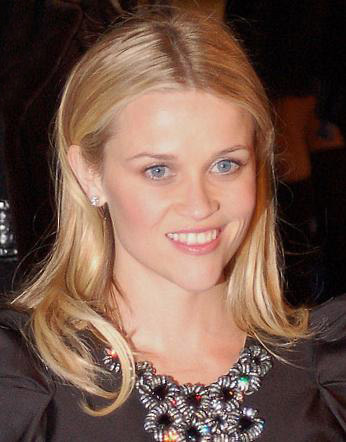
The name Farrah Fawcett conjures images of an American icon, a radiant star whose captivating smile and legendary ‘Farrah-do’ hairstyle defined an era. Yet, beneath the veneer of Hollywood glamour and widespread adoration, lay a personal life marked by considerable complexity and, at times, profound struggle. Central to this narrative, often viewed through the lens of both public fascination and private sorrow, is her only child, Redmond James Fawcett O’Neal, whose own existence unfolded within the unique crucible of celebrity, parental turmoil, and deeply personal battles.
Redmond’s story is not merely a footnote to his mother’s illustrious career; it is a poignant testament to the intricate challenges faced by those born into the relentless spotlight of fame. His life, as documented, has been a difficult journey, characterized by deeply entrenched struggles that often drew public attention, intertwining his personal trials with the enduring legacy of his mother. It’s a narrative that invites a closer look at the intricate tapestry of family, fame, and the very real human frailties that transcend celebrity status.
This exploration delves into the foundational elements of Redmond O’Neal’s life, from his celebrated birth to the shadows cast by his parents’ tumultuous relationship, and the profound impact of his personal demons. It paints a detailed portrait, meticulously reconstructed from the available records, revealing the inherent difficulties of a life lived amidst intense public scrutiny and profound private sorrow, highlighting the unfortunate nexus where personal struggles intersect with public perception.
1. **Born into the Glare: The Progeny of Hollywood Royalty**
Redmond James Fawcett O’Neal arrived on January 30, 1985, as the son of two of Hollywood’s most recognizable figures: Farrah Fawcett and Ryan O’Neal. His birth immediately placed him within the exclusive circle of celebrity offspring, a life destined to be observed, discussed, and often, scrutinized. Farrah Fawcett, by then, had cemented her status as an international phenomenon, a television icon who had transitioned from ‘Charlie’s Angels’ into acclaimed dramatic roles, while Ryan O’Neal was a respected film and television star. Their union, though often tempestuous, was undeniably one of the most high-profile romances of its time.
This familial lineage meant that Redmond was born not just into a family, but into a dynasty of fame. From his earliest days, he was, by extension, a part of a narrative that captivated millions, a story woven with threads of glamour, ambition, and intense media interest. The inherent privilege and opportunities associated with such a birth were immense, yet they also came with an unspoken burden – the weight of expectation and the constant erosion of privacy that defines life in the public eye.
The context of his birth also placed him at the heart of an already complex dynamic. His mother, Farrah, had been married to Lee Majors from 1973 to 1982, separating in 1979, the same year she became romantically involved with Ryan O’Neal. Redmond’s arrival therefore signaled a new chapter in Farrah’s personal life, a tangible representation of her relationship with Ryan, which would itself become a subject of continuous public fascination. The very foundations of his life were thus laid in a landscape of shifting personal alliances and intense media glare, an environment few children ever navigate.
Being the son of such prominent figures inevitably meant that his private moments were rarely entirely his own. The curious gaze of the world, accustomed to following the every move of his parents, would naturally extend to him. This early, almost involuntary, immersion into the public domain would arguably set a precedent for how much of his life, especially its challenges, would later be played out under the harsh light of public awareness, shaping the trajectory of his existence from the very start.

2. **The Fractured Foundation: Parental Discord and Its Echoes**
Redmond O’Neal’s formative years were undeniably shaped by the tumultuous and widely publicized relationship between his parents, Farrah Fawcett and Ryan O’Neal. The context explicitly details that while they became romantically involved in 1979, their relationship experienced troubles. Farrah herself acknowledged this complexity, confiding in a 1994 TV Guide interview, “Sometimes Ryan breaks my heart, but he’s also responsible for giving me confidence in myself.” This admission hints at the emotional highs and lows that characterized their bond, a dynamic that would have inevitably permeated their home life.
Further illuminating the challenging environment was the stark allegation made by Ryan O’Neal’s daughter, Tatum O’Neal, regarding his treatment of Farrah. Tatum alleged, “He had a terrible temper and was very violent. He beat her up.” While the context doesn’t offer Farrah’s direct confirmation of these specific incidents, the presence of such serious accusations within the family narrative paints a vivid picture of a household where conflict and potentially even violence were not unheard of. Such an atmosphere could profoundly impact a child’s sense of security and well-being, potentially laying groundwork for future difficulties.
The parents’ on-again, off-again relationship, marked by separation in the public eye and eventual rekindling, would have provided little consistent stability. Although Fawcett and O’Neal rekindled their relationship in 2001, the years of separation and the inherent instability of their connection suggest a background of uncertainty for Redmond. This kind of parental pattern, characterized by dramatic shifts and unresolved tensions, is often cited by developmental psychologists as a significant factor in a child’s emotional development, potentially contributing to feelings of instability or anxiety.
Moreover, the nature of their fame meant that any parental discord was amplified by media attention. The narrative of Farrah and Ryan’s romance and its travails was often played out in headlines, ensuring that any challenges Redmond faced were not just private family matters but public spectacles. This constant external validation or judgment of his family’s struggles could have added an immense layer of pressure, forcing him to confront deeply personal issues within a glaring, unforgiving public arena, thus complicating his ability to navigate a normal childhood and adolescence.
3. **A Battle Within: The Long Shadow of Addiction**
Central to the tragic dimension of Redmond O’Neal’s life is his well-documented struggle with drug addiction. The context unequivocally states, “He has struggled with drug addiction for most of his adult life.” This is not a fleeting issue or a passing phase; it is presented as a persistent and consuming battle that has defined a significant portion of his existence, casting a long and pervasive shadow over his adulthood. Addiction, by its very nature, is a profound and debilitating challenge, often isolating individuals and eroding their personal well-being.
The phrasing “most of his adult life” underscores the chronic and enduring nature of this struggle. It suggests a journey fraught with relapses and constant effort, a testament to the powerful grip that addiction can hold. For someone living under the intense scrutiny of the public eye, such a battle is made even more arduous, as personal vulnerabilities and setbacks are often exposed and sensationalized, compounding the inherent difficulties of recovery and self-rehabilitation.
The context, while not detailing the onset or specific instances of his drug use, implicitly links his troubles to the complex environment of his upbringing. While causality is not explicitly drawn, the confluence of high-profile parentage, public pressure, and documented parental discord often creates fertile ground for individuals to seek solace or escape in substances. Redmond’s addiction, therefore, can be viewed as a deeply personal affliction, yet one that tragically resonates within the broader narrative of celebrity children grappling with unique pressures.
His struggle with addiction is not merely a private health issue; it has been a defining characteristic that has manifested in very public ways, most notably through his legal difficulties. The impact of drug addiction often extends beyond the individual, affecting family relationships, personal stability, and societal interactions, and for Redmond, these consequences frequently led him into conflict with the law, further cementing the perception of a ‘troubled life.’ This ongoing fight against his inner demons is a core component of his personal tragedy, demonstrating the immense power of such a disease.
4. **Tangled in the Legal Web: Repeated Encounters with the Law**
As a direct consequence of his struggle with drug addiction, Redmond O’Neal has frequently found himself embroiled in legal difficulties, repeatedly coming “in trouble with the law.” This pattern of legal entanglement is a stark indicator of the profound impact his addiction has had on his life, transitioning a private health battle into a series of public judicial events that have continuously highlighted his plight. Each encounter with the legal system serves as a grim marker in his troubled biography.
His incarcerations are particularly telling. The context notes that in April 2009, during his mother Farrah Fawcett’s final illness, Redmond visited her while “shackled and under supervision because he was then incarcerated.” This poignant detail powerfully illustrates the severity of his legal issues – his freedom was so curtailed that even visiting his dying mother required a supervised release from detention. Such a scenario underscores a life severely constrained by legal repercussions, where even deeply personal family moments are overshadowed by the weight of his criminal justice status.
Further reinforcing this pattern, Redmond was again “permitted to leave his California detention center to attend the service” for his mother’s funeral on June 30, 2009. The fact that he was released from a detention center specifically for this solemn occasion speaks volumes about his ongoing legal entanglements and the intermittent nature of his freedom. It implies a cycle of offenses and incarceration, where even significant life events are punctuated by the strictures of the penal system.
The continuous mention of his legal troubles, from general statements about being ‘in trouble’ to specific instances of incarceration and supervised visits, points to a chronic challenge that has consistently disrupted his life. These encounters with the law are not isolated incidents but rather a recurring theme, suggesting a deeply entrenched pattern of behavior linked to his addiction. This cycle of legal woes forms a significant and unfortunate chapter in the narrative of Redmond O’Neal’s life, demonstrating the severe and often public consequences of his personal struggles.

5. **A Son’s Agony: Witnessing a Mother’s Final Battle**
Farrah Fawcett’s courageous battle against anal cancer, first diagnosed in 2006, captivated and concerned the world. Her struggle, meticulously documented in the 2009 NBC documentary “Farrah’s Story,” became a profoundly public narrative of resilience and vulnerability. Yet, as the radiant star navigated her terminal illness, her only son, Redmond O’Neal, faced a personal ordeal that tragically mirrored and amplified the family’s pervasive sorrows.
By early April 2009, Farrah’s health had deteriorated significantly, necessitating her hospitalization upon returning to the United States. Reports from May 7 painted a grim picture, with Ryan O’Neal sharing that Farrah was critically ill, confined to her home, dependent on an IV, and frequently succumbing to sleep. This period marked the intensely painful final chapter of her life, a time when her family braced for the inevitable.
It was during these agonizing last stages that the convergence of Farrah’s decline and Redmond’s persistent troubles became starkly evident. The Los Angeles Times poignantly reported that despite being “in the last stages of terminal cancer,” Farrah had managed to see her son Redmond in April 2009. The visit, however, was not one of unbridled filial comfort; Redmond was present “shackled and under supervision because he was then incarcerated.”
This image—a mother confronting her mortality, a son bound by his legal woes—is a powerful and tragic illustration of their intertwined destinies. His presence, though physically constrained, offered a final, bittersweet connection, a testament to the unbreakable, albeit challenged, bond between them. It epitomized the cruel intersection of personal addiction, judicial consequence, and the profound grief of impending loss, all under the unyielding gaze of public attention.

6. **A Somber Farewell: Restricted Mourning at Her Funeral**
Farrah Fawcett’s life, a vibrant tapestry of glamour and achievement, concluded on June 25, 2009, at the age of 62, in Santa Monica, California, with Ryan O’Neal and Alana Stewart at her side. Five days later, a private funeral service was held in Los Angeles, a solemn gathering to bid farewell to an American icon whose passing, coincidentally, was largely overshadowed by the death of Michael Jackson on the very same day.
For Redmond O’Neal, the funeral was an occasion steeped in both profound grief and the unrelenting reality of his circumstances. The details from the context reveal that “Farrah’s son Redmond was permitted to leave his California detention center to attend the service,” a stark reminder that even in mourning, his life remained under the strictures of the legal system. This extraordinary arrangement underscored the pervasive nature of his addiction-fueled legal entanglements.
In a moment that would have been deeply personal and emotionally charged, Redmond stepped forward to deliver the first reading at his mother’s service. This act, a traditional expression of love and remembrance, was performed under the shadow of his incarceration, transforming a private ritual into a poignant public display of his troubled existence. The solemnity of the occasion was undeniably tinged with the stark visual of a son attending his mother’s final rites under supervision.
His presence, physically constrained yet emotionally resonant, served as a heartbreaking emblem of his enduring bond with Farrah, even as his life veered off course. It was a poignant scene, encapsulating the dual narratives of his tragic personal battle and his irreplaceable role as his mother’s only child, forever marked by the indelible complexities of their shared history and his individual struggles.
7. **A Mother’s Legacy: The Protective Provisions of Farrah’s Trust*
In the meticulous planning of her estate, Farrah Fawcett made a series of deliberate decisions concerning her substantial wealth, revealing her priorities and concerns. Notably, her long-time partner, Ryan O’Neal, was not named in her living trust, which she had last amended in 2007, a fact that speaks volumes about her ultimate wishes for the distribution of her assets. This omission, while perhaps surprising to some, underscored the personal nature of her final arrangements.
The lion’s share of her estate, a significant sum of $4.5 million, was thoughtfully bequeathed to her only son, Redmond. This immense provision was placed within a carefully constructed trust, overseen by her business manager, Richard Francis. It was a profound expression of a mother’s enduring love and unwavering desire to secure her son’s future, a stark contrast to the tumultuous public image of their lives.
However, the structure of Redmond’s inheritance was not without its protective conditions, a testament to Farrah’s acute awareness of his ongoing struggles with drug addiction. The trust was designed so that “Redmond is permitted to collect interest on the trust,” providing a steady income, but with a critical stipulation: “the principal of the trust is available only for matters relating to Redmond’s health care.” This foresight ensured that the funds would primarily serve his recovery and well-being, rather than becoming a potential enabler of his destructive habits.
Beyond the principal focus on Redmond, Farrah’s generosity extended to other significant figures in her life. Her nephew, Gregory Walls, and her father, James Fawcett, each received $500,000, acknowledging their importance. Intriguingly, her college boyfriend, Gregory Lott, was also named as a beneficiary, receiving $100,000, a detail that further illuminated the mosaic of her personal relationships and attachments. These specific bequests collectively painted a picture of a woman who, even in her final arrangements, sought to care for those she cherished.

8. **The Enduring Battle: The Warhol Portrait Controversy and Familial Discord**
Farrah Fawcett’s deep appreciation for art manifested not only in her own creative endeavors but also in her friendships with prominent artists. A notable chapter in her artistic legacy involved her connection with Andy Warhol. The context highlights that in 1980, “O’Neal facilitated a meeting between Fawcett and artist Andy Warhol, who created two portraits of Fawcett during their time together.” These distinctive pop art pieces would later become central to a contentious dispute.
Following her passing, Farrah’s artistic collection was formally bequeathed to the University of Texas, her alma mater, reflecting her desire for her treasured works to enrich a public institution. Yet, upon the university’s receipt of the collection, a significant and valuable piece was conspicuously absent: “one of her Andy Warhol portraits was missing.” This discovery ignited a complex legal battle, adding another layer of controversy to the O’Neal and Fawcett family narrative.
The University of Texas, asserting its rightful claim as the named beneficiary, launched a lawsuit in 2011 “after discovering that O’Neal had retained the portrait.” Ryan O’Neal, in turn, countered the claim, maintaining that “Fawcett had given the painting to him,” a personal gift that he believed superseded the will’s general bequest. This created a direct legal standoff over the ownership of the iconic artwork, thrusting a valuable piece of art into the glare of a public dispute.
The complexity of Farrah’s wishes was further illuminated by the testimony of Gregory Lott, her college boyfriend and another beneficiary of her trust. Lott “alleged that Fawcett never gave up ownership of the portrait and that it was her wish to bequeath all her artwork to her alma mater.” His statements offered an alternative perspective on Farrah’s intentions, suggesting a consistent desire for her entire artistic legacy to reside with the university.
The prolonged legal entanglement culminated in a decisive ruling in December 2013, when “a Los Angeles court ruled that the portrait belonged to O’Neal.” This judgment, coming years after Farrah’s death, finally resolved the high-profile dispute, albeit not without lingering questions for some. The portrait’s substantial estimated value, “between $800,000 and $12 million during the court case,” underscored the significant stakes involved in this final, post-mortem battle over Farrah Fawcett’s cherished possessions.
Redmond O’Neal’s life, unfolding within the intense glare of Hollywood’s spotlight, stands as a poignant narrative of inherent privilege shadowed by profound personal turmoil. From his birth into an iconic lineage to the enduring battles with addiction and legal entanglements, his journey has consistently highlighted the intricate and often unforgiving complexities faced by those living under the weight of celebrity. Farrah Fawcett, in her final acts, sought to both protect and provide for her only son, a testament to a mother’s unconditional love, even as the familial disputes, like the contentious Warhol portrait, underscored the lingering fault lines within their celebrated yet troubled legacy. Ultimately, Redmond’s story is a stark reminder that even amidst the glamour, the human spirit can grapple with immense challenges, a legacy of fame and fragility intertwined for generations to come.






